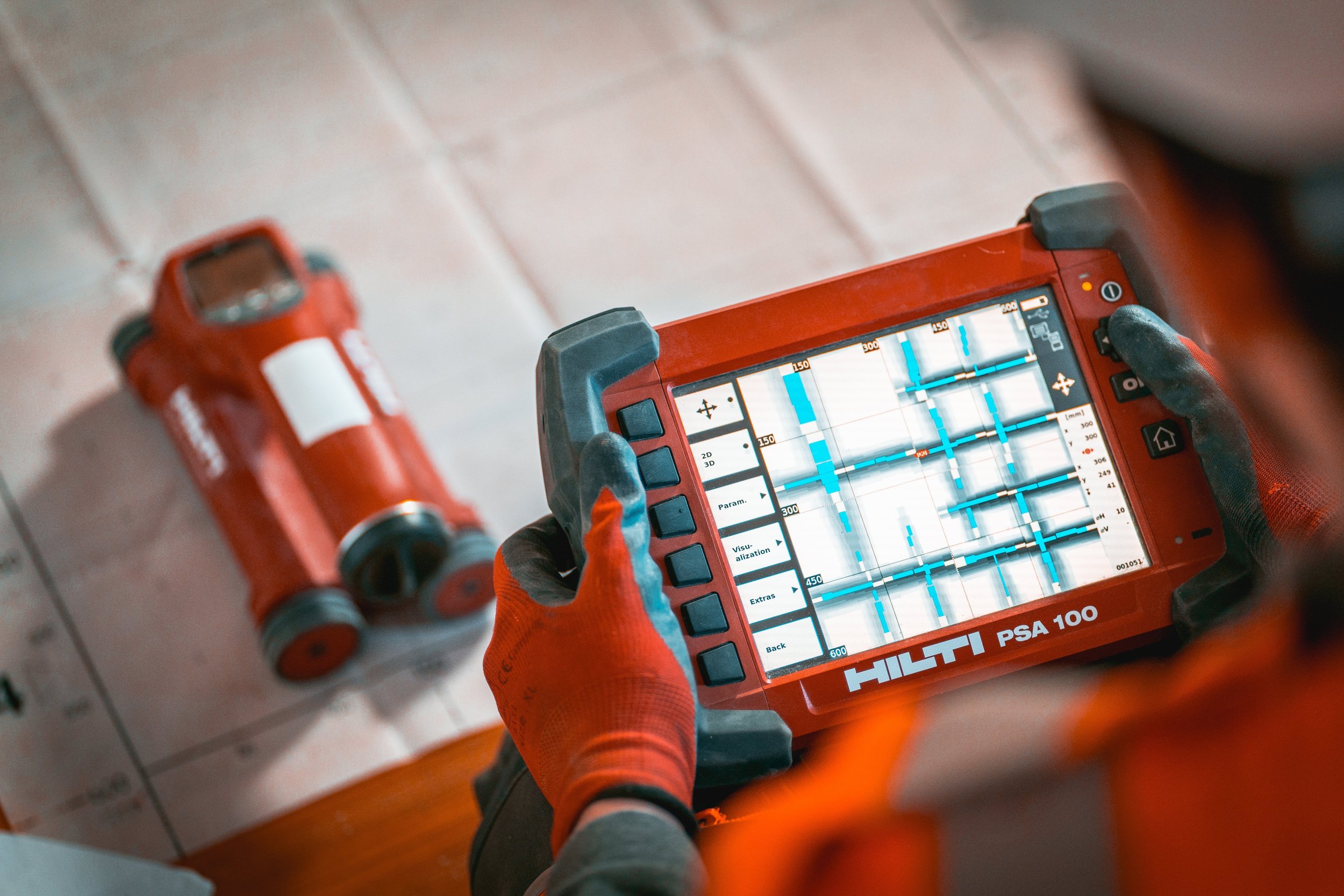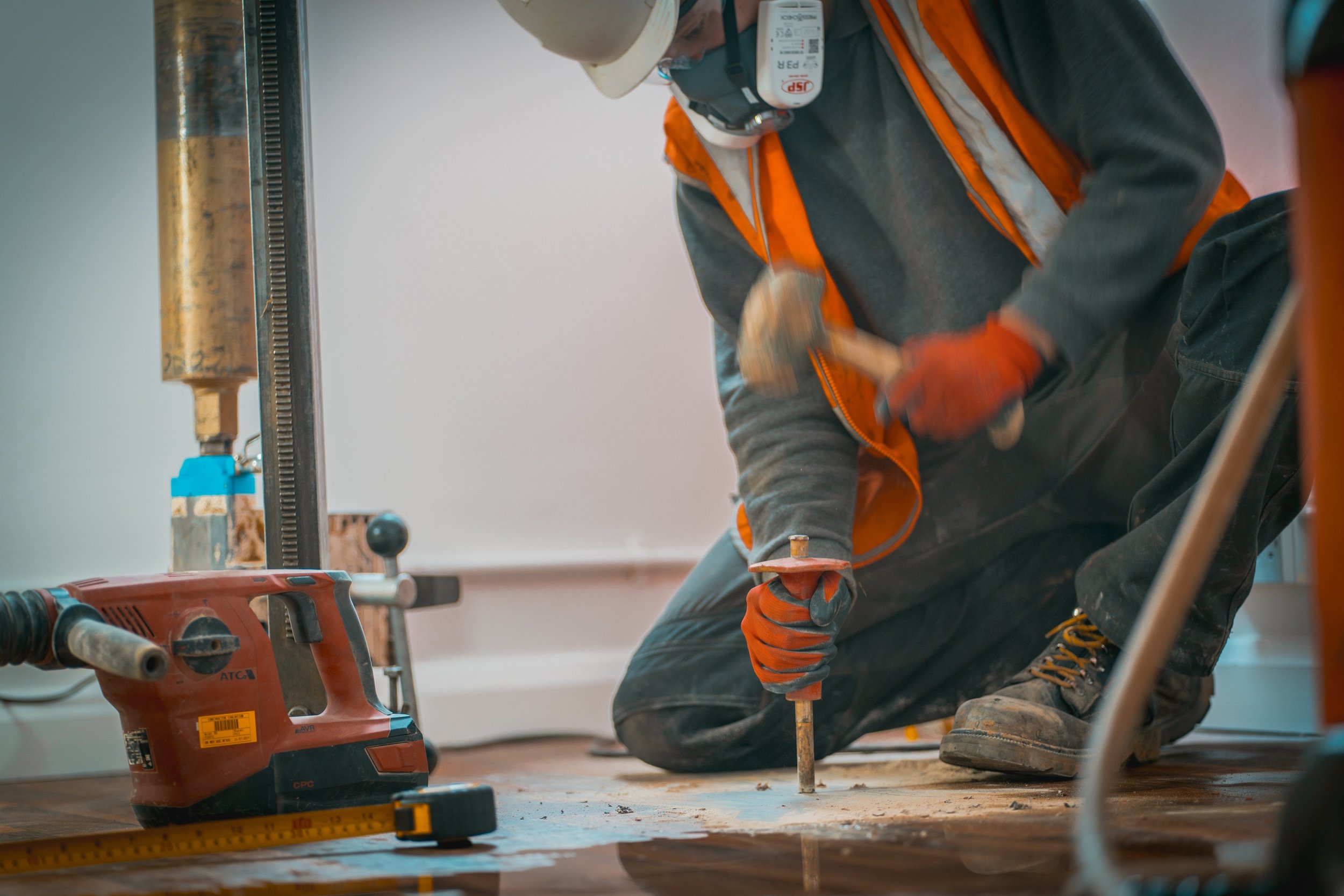
Ultrasonic Pulse Velocity (UPV) Testing
Ultrasonic Pulse Velocity (UPV) Testing
Ultrasonic Pulse Velocity Testing (UPV) is a non-destructive testing method used to assess the quality of concrete structures. This technique measures the speed at which ultrasonic pulses travel through concrete, providing valuable information on the material's density, elasticity, and uniformity. It is an essential tool in the field of construction diagnostics and quality control.
Methodology
The UPV testing process involves several key steps:
Preparation: Before testing, the concrete surface must be clean and free from debris. Any irregularities that may interfere with the test must be addressed.
Equipment Setup: The UPV apparatus consists of a pulse generator and a receiving transducer. The pulse generator produces ultrasonic pulses that are transmitted into the concrete through a coupling medium, typically a gel or grease.
Wave Propagation: The ultrasonic waves travel through the concrete. The time taken for the pulse to travel from the transmitter to the receiver is recorded. This time, known as the travel time, is crucial for calculating the velocity of the waves.
Data Analysis: The velocity of the ultrasonic waves are calculated using a formula. This velocity information can then be translated into insights about concrete properties, such as compressive strength, quality, and presence of voids or cracks.
Interpretation: The results are compared to established standards or previous measurements. A higher pulse velocity generally indicates better quality concrete, while lower velocities may suggest flaws or weaknesses within the structure.
Benefits of Ultrasonic Pulse Velocity Testing
Non-Destructive: UPV testing does not damage the concrete, allowing for assessments without compromising the structure’s integrity.
Quick Results: The method provides rapid feedback, enabling timely decision-making regarding construction quality or the need for repairs.
Detailed Insights: It offers detailed information on various concrete characteristics, including its consistency, homogeneity, and potential issues.
Versatile Applications: UPV testing can be used on existing structures and during new construction. It is suitable for various concrete forms, including cast-in-place and precast concrete.
Cost-Effective: By identifying defects early, UPV testing can save substantial costs associated with repairs or replacements in the future.
Compliance and Safety: Regular UPV testing ensures compliance with industry standards and enhances the overall safety of structures by ensuring they meet required specifications.
Contact Us
In conclusion, Ultrasonic Pulse Velocity Testing is an effective method for evaluating the condition and quality of concrete structures. Its non-destructive nature, coupled with its ability to provide rapid and reliable information, makes it a preferred choice for engineers and construction professionals. Understanding and implementing UPV testing can significantly contribute to the longevity and reliability of concrete infrastructures. Click here to read about our other concrete testing services. Contact us to discuss your requirements or to book a site visit
Our Services
Please Click on the tiles below to find out more about the services we offer
Contact Us
If you have any queries about any of our services please contact us, a member of our team will be happy to advise.





